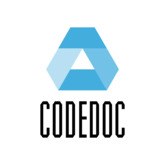For a beginner to the world of React, you may find that it is confusing at first to understand the concept and how it works. A fullstack developer will have a different take on React. If you come from the world of Rails or any other framework where there are lots of libraries to choose from, then you may feel at a disadvantage when learning React. However, there is no need to feel this way. The difference between React and other frameworks such as Miva, Handlebars and others is the fact that it provides a complete solution for a web app.
A basic full stack developer knows that he must provide a user interface for the app as well as handle all the Ajax calls in the backend. Even though most people will see the similarities between Miva and Handlebars, the differences go deeper. You may be wondering what to use with Miva for a simple Miva page. Well, you will need to use the back-end component library called Miva to achieve this.
In React, the front-end developers usually build the user interfaces themselves. They will find that using Miva is a good way to leverage the same technology without using any other technologies. Another plus point about using Miva is that you can find out more about component types and use them in the component tree, which in turn gives you an idea as to how different components will inter-relate with each other. So what is the back-end to use with React?
You may be wondering what you can do with Miva. If you use Miva as your back-end to react to the Ajax request by the client, then you can define your own components to use within your web app. You can also define reusable components and call them within the handler of the request. You will also have the ability to add authentication and data binding to your business logic. There are many options to control what the user sees and what actions are taken when they make a request to your web app. So the back-end to use with react can be quite complex if you are not already a fullstack developer.
If you are a fullstack developer, then you will find that there is a large community of talented and experienced fullback developers. A lot of these developers will be more than happy to share their tips and tricks with you. In my opinion, this is one of the best ways to get the ball rolling on what to do and how to approach an existing project. There are many different ways you can use Miva, so take a look at your available options and think about how you would like to have your own fullstack app built. It’s a great option for those who want to start learning the ropes and build a community around their applications.
Another good option is to build a “development platform” within the fullstack framework itself. This will allow you to easily create and use a number of different web apps. In my opinion, there is a lot of value in being able to build things independently and using tools that make it easy. So if you feel the need to learn more about what back-end to use with React, having a development platform to work with is certainly a wise choice. Plus you have the ability to contribute back-end and forward-thinking ideas to the fullstack framework.
Another consideration is what kind of user experience you want out of your web app. Many developers jump right in and think that the framework will do everything. However, if you have an HTML background, you may not want to use a framework like react. There are several differences and it is important that you understand them. However, react Native is becoming increasingly popular and may fit your needs perfectly.
In summary, the final consideration should be about what kind of back-end you plan on using – specifically, the data store, the browser side rendering, and so on. While these are critical pieces, they should not be the only aspects of your project. Remember that this is a big investment, so do your homework before making a decision. Also remember that there are many choices out there, so don’t be afraid to look at multiple options before deciding. I hope this article has given you some food for thought as you begin building React Native applications.
